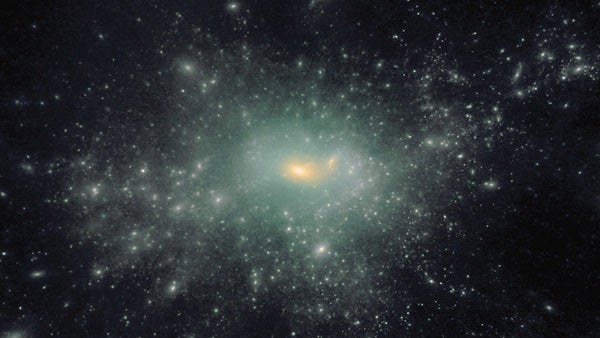Dark matter particles, being responsive to Newton’s laws of gravity, are certainly allowed to clump just like the ordinary matter that is made of protons, neutrons, and other familiar subatomic particles. Dark matter could, therefore, collapse into objects of any size. In fact, there is strong evidence today for the existence of dark matter “halos” — spherical clumps of dark matter centered around every galaxy that extend 10 times larger than the radius spanned by the galaxy’s stars.
However, the existence of “compact” dark matter objects, such as stars or planets, is more difficult to ascertain. Ordinary matter has an advantage over dark matter in forming stars or planets because of its electromagnetic interactions, which facilitate collapse into small, compact structures.
Whether dark matter can collapse into these MAssive Compact Halo ObjectS (or MACHOS, as they have been popularly known since the 1980s) is uncertain.
From the theory side, the clumping depends on the exact particle physics properties of dark matter particles, for example, the presence of any non-gravitational interactions between them. In any case, such clumping is certainly allowed in principle.
On the observational side, there exist upper limits on the abundance of MACHOS — made up of either ordinary or dark matter — in our galaxy and the neighboring Andromeda Galaxy (M31). Convincing evidence for the existence of MACHOS made up of dark matter would be incredibly exciting and would provide significant new information in our understanding of dark matter properties.
University of Michigan
Ann Arbor










